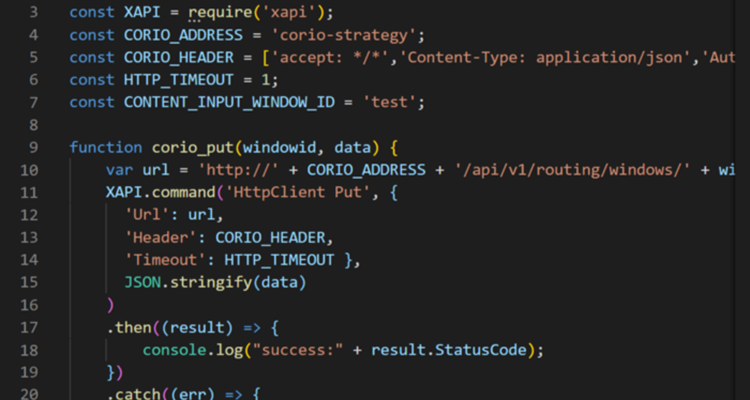An Integrator’s Response to: Should Design Consultants Be Doing Programming?
By Michael A. Diodato, CTS-D
Verrex Corporation
Michael A. Diodato, CTS-D, is executive vice president of operations for Verrex Corporation, an audiovisual, videoconference, and sound systems integrator in Mountainside, New Jersey. He can be reached at mdiodato@verrex.com
Having been an AV consultant for many years, I believe that a design consultant should be driven to always do what is best for his or her client. As with all industries, the consulting business has changed over time, and many have expanded their service offerings beyond the traditional or core competencies. In a bid scenario that draws low-bid responses or integrators that have little interest in developing a relationship with the client, then clearly the design consultant’s programming services should be considered beneficial to his client. However, when highly regarded AV systems contractors are involved, it is in the client’s best interest to consider the in-house capabilities of the contractor to deliver a full-service solution that includes Crestron or AMX programming.
While most modern project scenarios still have rather well defined roles, the AV industry has matured substantially, and there are now many less traditional project scenarios. In the age of global corporate standardization, there are projects that require a consultant to reach beyond the geographic limitations of AV contractors. In these cases, the roles and relationships become more complex. The client may not be able to hire a local AV contractor that suits its needs. Corporate politics are likely involved. There are a plethora of factors that the client should consider in its plans to acquire vendors, build and program AV systems, and train its employees.
As clients evaluate design consultants and systems contractors for their ability to deliver the systems and products they need in the short term, they should also consider the long-term needs for servicing their AV systems. It is often best to upgrade and service these systems by involving the original author of the Crestron or AMX code. Since long-term service is not a core-competency for most design consultants, clients that realize this might question the value of the programming services his design consultant offers. To many, this would appear to be a potential conflict of interest, circumstances notwithstanding.
In the AV programming community there are currently many options available to the customer. Freelance programmers, boutique programming companies, and manufacturers have worked indirectly with clients through AV contractors for years. And in many cases, an employee of the AV contractor performed the programming for the client. In all of these scenarios, the client was likely sold on a turnkey solution provided and installed by the AV contractor. It was never revealed if the programmer was not a direct employee of the AV contractor. And the client didn’t need to be concerned about this relationship because any time service was required, the client called the AV contractor, not the programmer. The AV contractor “owned the code” and there were no issues fixing the problem or upgrading the system because of a subcontractor relationship. In many cases the AV contractor would re-hire the original programmer for customer support.
The best design consultants and systems contractors retain their customers by providing an excellent experience for the customer. This comes from having a collaborative process that promotes teamwork between the client, consultant and contractor. When an outside programmer is inserted into the contractor’s well-organized team, it can be disruptive to the contractor’s internal process; creating inefficiencies and communication issues. This is true even if the programmer is a frequent subcontractor to the contractor. It would be more apparent if the design consultant inserts himself into the contractor’s team, as well as a potential conflict in the reporting hierarchy. Also, once the programming is deemed logical and functional by the contractor’s internal testing and commissioning process, spending any more time adding “fluff” impacts the bottom line, the project schedule, and creates potential headaches for their Service Department after system commissioning.
While the project, budget, and politics may dictate who does the consulting and who builds the systems, subsequent training and service may be the crux of the situation for clients to decide who does the programming for their AV systems. Many AV salespeople have professed the power and intuitiveness of their walk-up-and-use touch panel solutions. However, the client is not going to forego user training because he expects the touch panel design will be self-explanatory to everyone that walks into the room. In that regard, these user interfaces sometimes fall short of the client’s expectations during training.
All business owners need to be thinking about ways to improve their company and compete in the marketplace, including adding profitable services and products that are desirable to their customers. This brings customers back for more. However, striving to provide products and services that are truly in the best interest of their clients is what builds stronger relationships. These important values are usually reflected in the company culture that is established by the business owner.
So, who should do the programming? Hopefully, the client has all the information necessary to make that decision.





